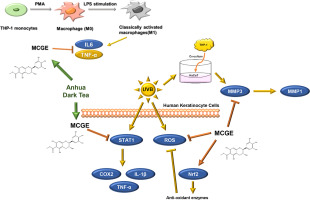Osteoporosis is a systemic bone disease characterized by reduced bone mass, microstructural damage, increased bone fragility, and a propensity for fractures. Vitamin D deficiency is a contributing factor to osteoporosis, rickets, and other metabolic bone diseases. Adequate vitamin D supplementation is crucial for treating osteoporosis, but traditional methods such as medication may pose risks of toxicity and require regular monitoring of calcium and phosphorus levels. Sunlight exposure, while convenient, has limitations such as limited coverage, skin aging, and uncontrollable light intensity.
Artificial Light Source for Osteoporosis Treatment
Currently, the treatment of osteoporosis with artificial light sources primarily involves the use of 280-350nm fluorescent lamps, significantly increasing vitamin D levels. However, fluorescent lamps have broad spectra, making it challenging to filter out unfavorable wavelengths. The fixed wavelength and large size of phototherapy devices limit their effectiveness in treating osteoporosis. There is a need for a more optimal artificial light source.
Advancements with UVB LED Technology
With the evolution of UVB LED technology, UVB LEDs address the shortcomings of fluorescent lamps. UVB LEDs have a narrow wavelength range (10nm), effectively filtering out undesirable wavelengths and allowing for the selection of the optimal wavelength. They offer longer lifespans, lower energy consumption, and greater stability. Phototherapy devices utilizing UVB LEDs can be wearable, providing a safe, comfortable, and easily controllable treatment experience.

Research Findings and Optimal Parameters
Studies conducted by the Medical and Engineering Integration Research Institute at Beijing Institute of Technology indicate that the optimal wavelength for UVB LED modulation of osteoporosis is 293nm. Compared to sunlight, UVB LED at 293nm more effectively generates vitamin D3 in skin samples. A 0.52-minute exposure to UVB LED produced more than twice the amount of vitamin D3 as a 32.5-minute exposure to sunlight. A wavelength of 293nm, power of 0.4mW/cm², and 1000s exposure constitute a safe dose of narrowband UVB LED irradiation, with no harm to the skin, enabling non-invasive phototherapy for osteoporosis.
Boston University School of Medicine conducted tests on UVB LEDs with different wavelengths and sources. The 293nm LED exhibited the maximum potential for vitamin D3 generation in the shortest time. This research opens doors to a new generation of photobiology techniques, utilizing LEDs with specific wavelengths to induce targeted biological effects in human skin, aiding in the treatment and prevention of chronic diseases.
Potential Impact and Future Developments
Yingfeng Optoelectronics recognizes the significant potential of UVB LED technology in phototherapy. The company’s 293nm UVB LED holds promise for innovative applications in treating osteoporosis, potentially improving and saving lives. National epidemiological studies indicate a total osteoporosis prevalence of 12.4% in China, exceeding 160 million people, making it the country with the highest number of osteoporosis patients globally. We believe that with the efforts of research teams and groundbreaking work in UVB LED technology, innovative treatment solutions may soon emerge to assist millions of individuals.
 Shenzhen Yingfeng Opto-Electronic Co., Ltd.
Shenzhen Yingfeng Opto-Electronic Co., Ltd.
